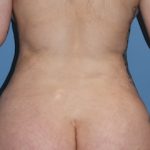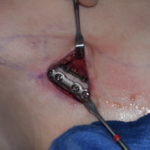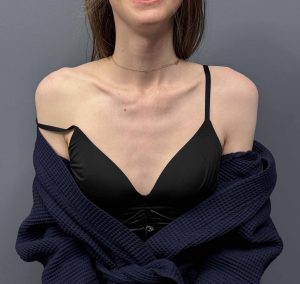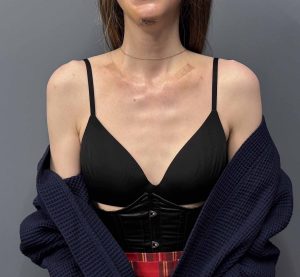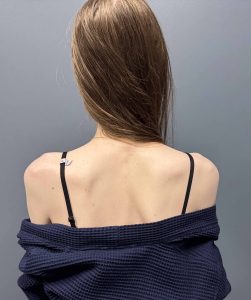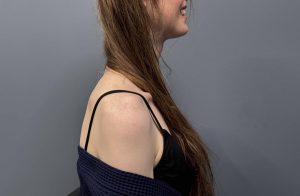Background: Reductive shoulder narrowing surgery has been proven to be effective by shortening the length of the clavicle bones. The surgery to do so is fairly straightforward, removing a segment of the clavicles will naturally move the attached shoulders inward. While the surgery seems like a linear concept it is not and therein lies many of the questions about the surgical outcome.
While the clavicle keeps the arm and shoulder girdle horizontally away from the body it does not do so in a completely linear fashion. The clavicle is a curved bone whose two joint attachments are at different horizontal levels.m The lateral AC (acromioclavicular) joint is at a higher level than the medial SC (sternoclaviclar) joint. Thus the shoulder and upper arm is pushed up and out from the body in a 30 to 40 degree angle. As a result when the clavicle is shortened and the shoulder moves inward it does not do so in a straight linear fashion. Rather it moves down and in creating the potential for a more narrow but rolled in shoulder appearance.
The positive effect of this shoulder movement is that it males the shoulders less square and with a softer and a bit more rounded appearance in the front and back views. But in the side view how much does the shoulder actually roll in?
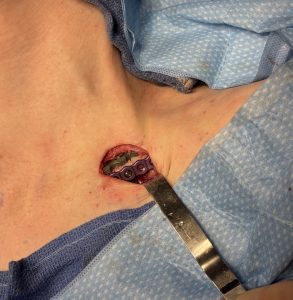
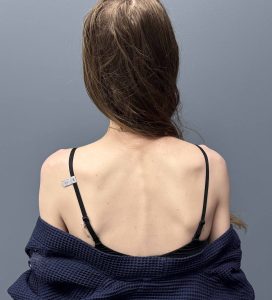
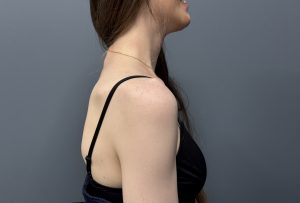
One of the very common questions about shoulder reduction surgery is will the shoulder looks weird by being too rolled in. The answer is no and no patient yet (with over 100 cases done) has ever voiced that as a postoperative concern. While the anatomic shape of the clavicle is the reason it occurs the amount of clavicle bone length removed is not enough to make this change in shoulder shape significant in aesthetic appearance. Its modest effect also causes no postoperative range of arm motion changes or limitations.
Key Points:
1) In very tall female patients the amount of clavicle bone removed must be greater than shorter patients for a proportionate reduction in shoulder width.
2) There is minimal roll in of the shoulders are clavicle bone length reduction.
3) Taller patients do not necessarily have thicker clavicles but definitely longer ones.
Dr. Barry Eppley
World-Renowned Plastic Surgeon

